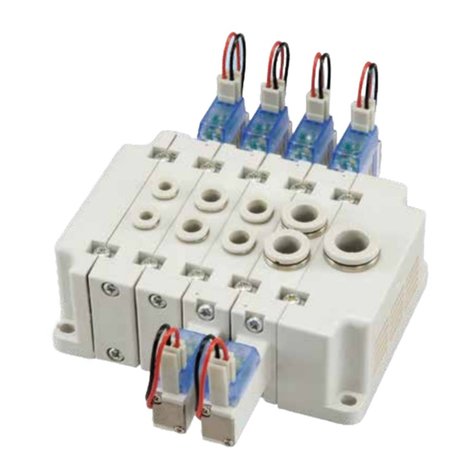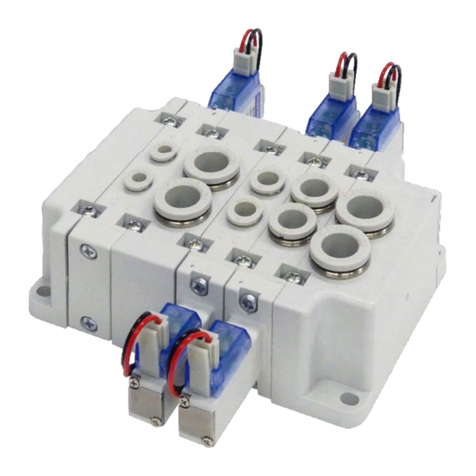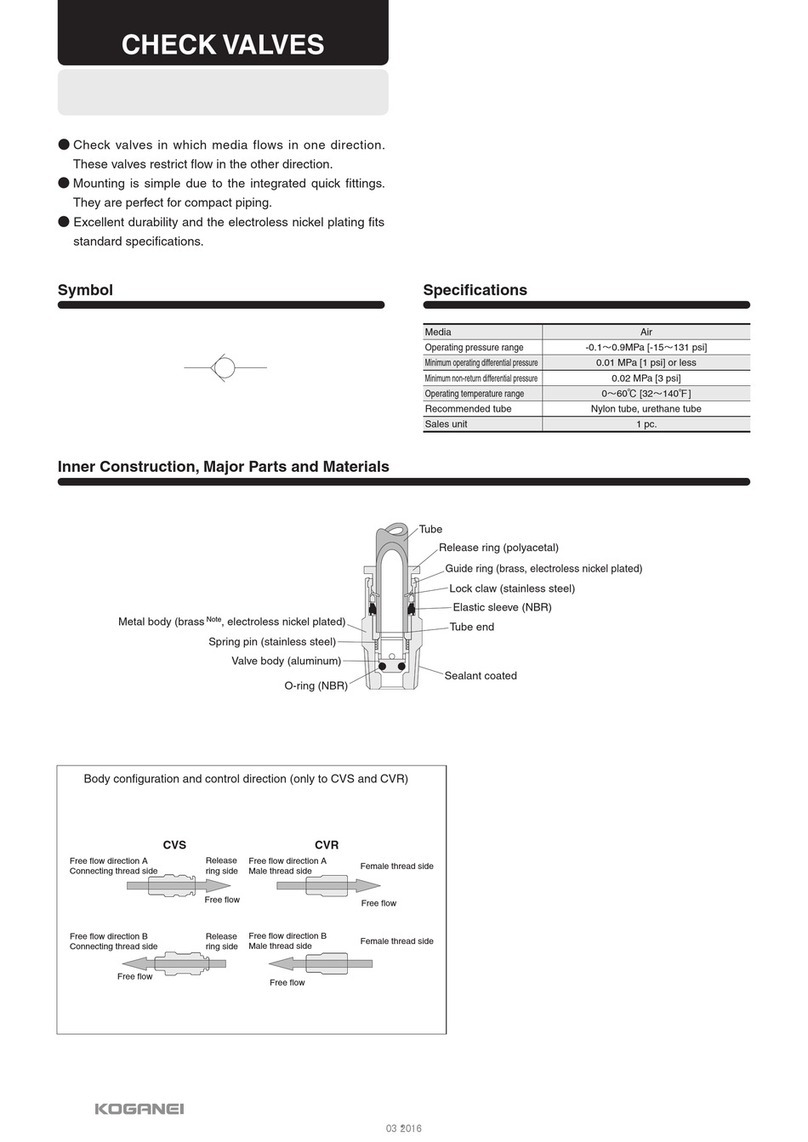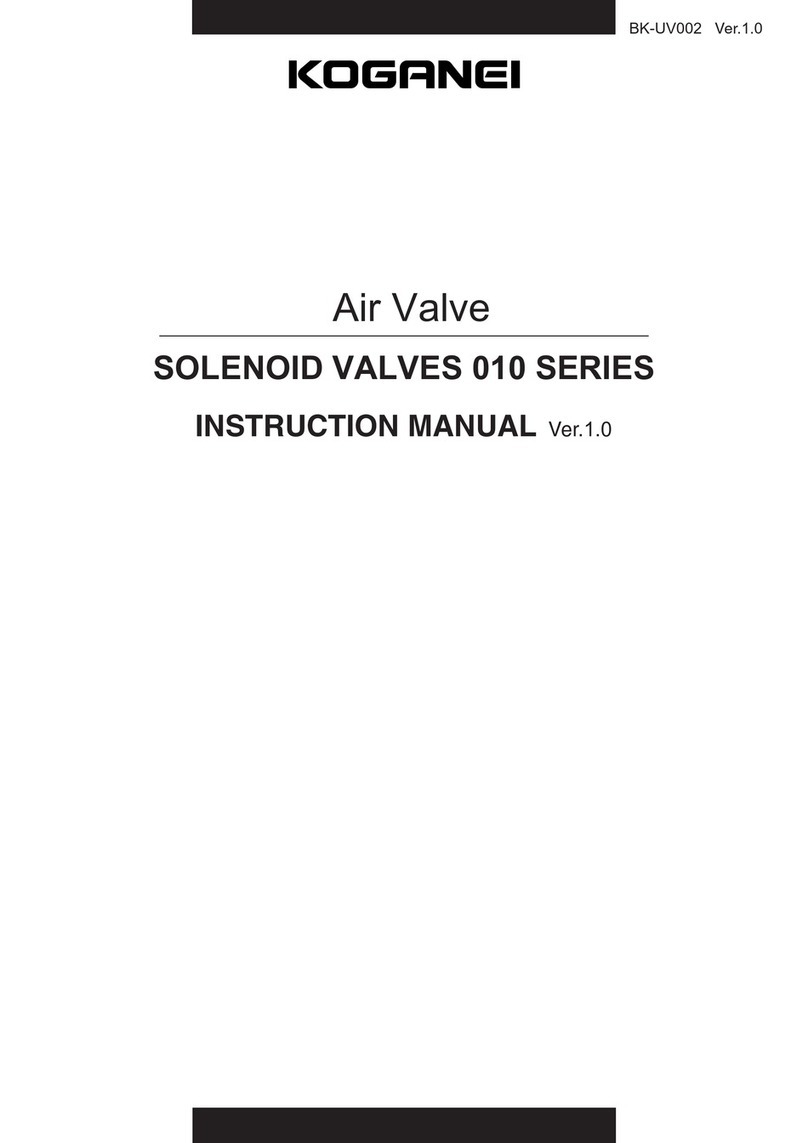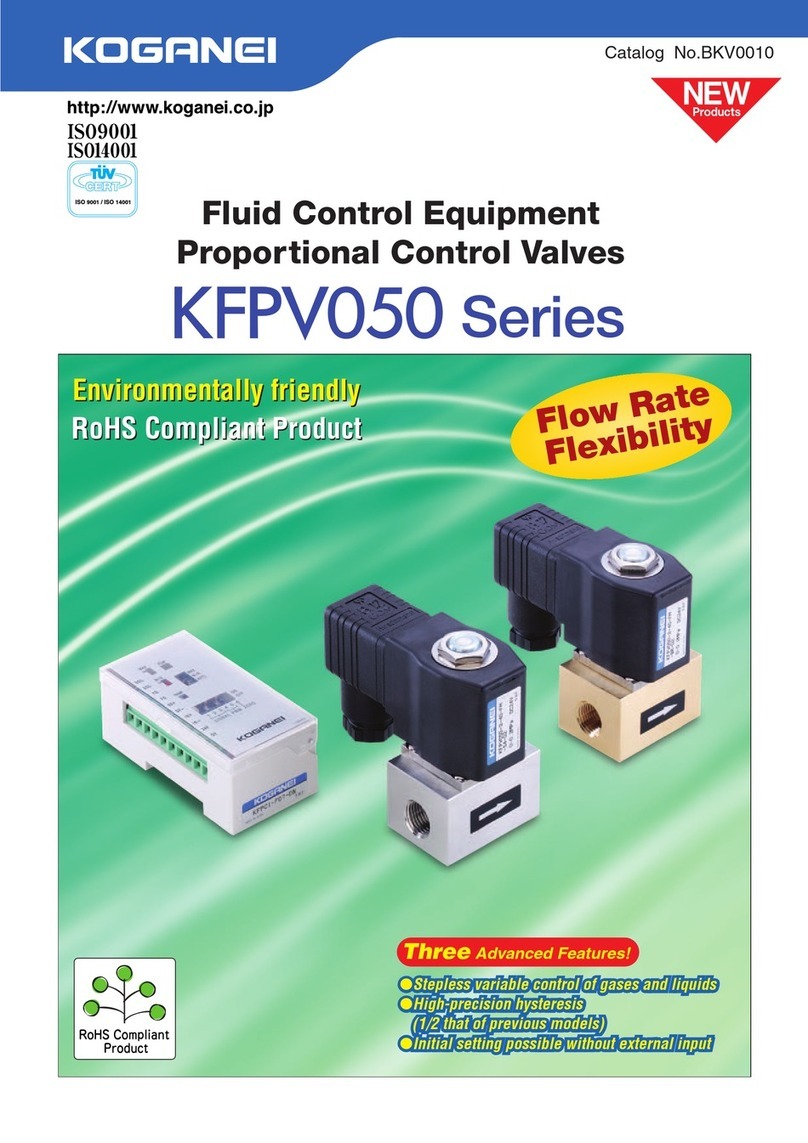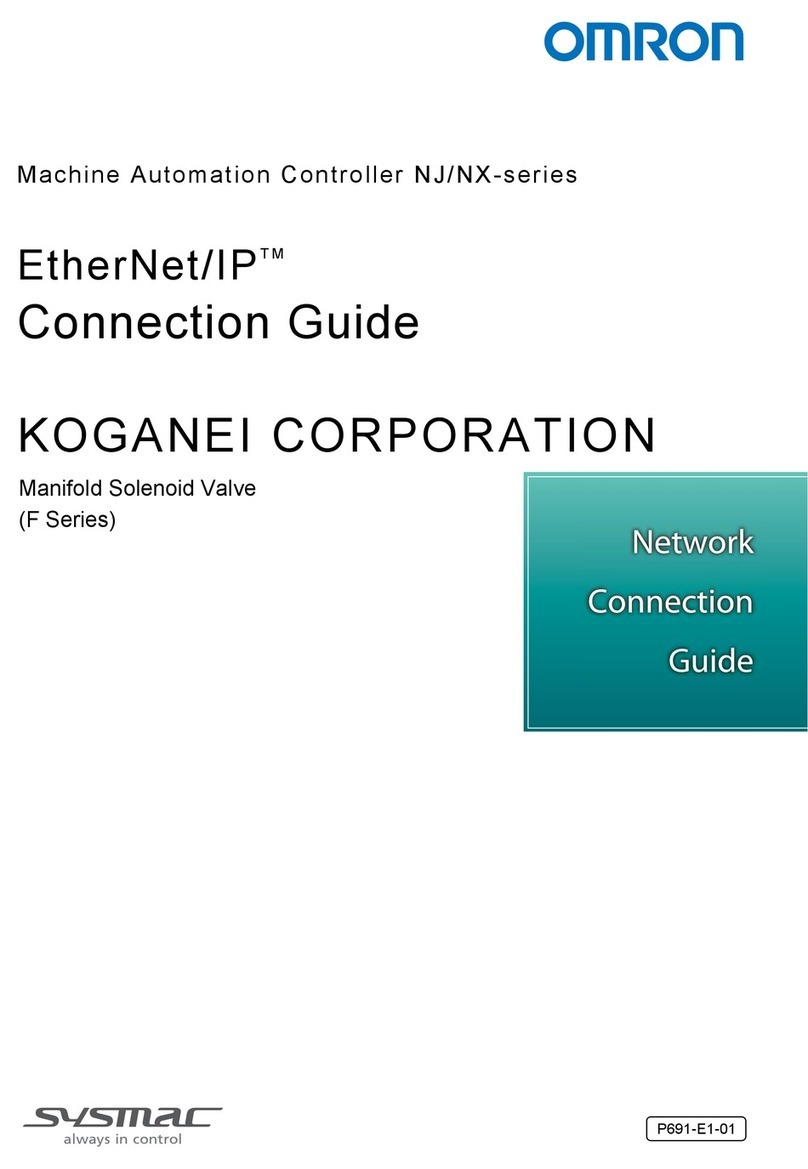
Handling Instructions and Precautions
Precautions for mounting the body
①Use the appropriate tool to tighten the hex nuts on the hand
valve's tapered threads for pipes.
②Refer to the following table of recommended tightening
torques when tightening the threaded parts. If you use more
than the recommended torque when tightening the threaded
parts, you may cause leaks by damaging or deforming the
threads. Also, if you use less than the recommended torque
when tightening the threaded parts, it may result in
looseness or leaks.
Precautions for disconnecting fittings
Fixing
①Use the appropriate tool to remove the hex nuts from the
hand valve's tapered threads for pipes.
②Remove the sealant from the threads on the other parts. If
the sealant is stuck to the other parts, it may get into
peripheral devices and cause a malfunction.
Tapered threads
for pipes
Thread type Thread size
7 to 9 N•m [61.957 to 79.659 in•lbf]
12 to 14 N•m [106.212 to 123.914 in•lbf]
22 to 24 N•m [194.722 to 212.424 in•lbf]
28 to 30 N•m [247.828 to 265.530 in•lbf]
R1/8
R1/4
R3/8
R1/2
Tightening torque
Recommended tightening torque
Precautions for attaching tubes
①Confirm that the cut surface of the tube is cut straight across,
that the outer surface of the tube is not damaged, and that
the tube has not become oval shaped.
②When connecting tubes, if you do not insert the tube all the
way to the tube end, it may result in leaks.
③After installing the tube, pull on it to check that it does not
come off.
④Do not meaninglessly press on the release ring before
attaching a tube. Doing so may cause the tube to become
detached.
Precautions for removing tubes
①Before removing tubing, be sure to confirm that the pressure
inside the tubing is zero.
②Uniformly press the release ring inwards as far as it goes
and then pull out the tubing. If you do not fully press in on
the release ring, the tube may not come out, or the tubing
may become scratched causing debris to be left inside the
fitting.
The safety precautions for the hand valves are shown below. Be sure to read the material in the front of the General Personal Catalog
regarding safety precautions other than those below.
Safety Precautions (Hand Valve)
CAUTION
●To operate the cap lever, turn it 90°until it stops completely. Insufficiencies in flow volume and continuity due to incomplete
switching may occur if it is not fully turned.
●Check the identification for bidirectional valves and tri-directional valves with the ②or ③engraved on the top of the cap lever.
●Install a filter for the vacuum on the suction side when negative pressure is being used. Erratic operation may be caused by dirt that
has been sucked into the product.
Tube end
How to attach and detach tubes
①Attaching tubes
Hand valves are equipped with
lock claws that hold tubes in place
when they have been pushed all
the way to the end, and with an
elastic sleeve for sealing the
periphery around the tubes.
②Removing tubes
When removing a tube, pressing
the release ring opens the lock
claw and the tube can be pulled
out.
Be sure to stop the air before
removing tubes.
d
d
c
①Tightening the hex nuts
Tighten the hex nuts on straight A,
B, and nipple type hand valves
with a wrench.
②Fixing to the body
For union straight type hand
valves, use the fixing holes on
the plastic body and fix with
M4 screws. (Refer to the
diagra m fo r the exter n al
dimensions of the body for the
hole pitch to use for mounting.)
●Mounting ●Attaching and detaching tubes
